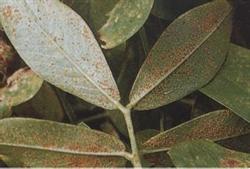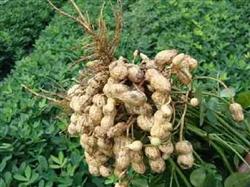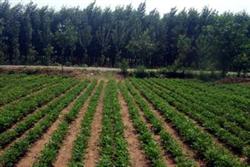Application of phosphorus Fertilizer to Spring Peanut

The amount of base fertilizer should account for 80% to 90% of the total amount of fertilizer. Some peanut fields only apply base fertilizer, and high yield can be obtained without topdressing in the later stage. Base fertilizer can be applied with 1000 kg to 3000 kg of high-quality ring fertilizer per mu. Peanuts need more phosphate fertilizer than ordinary crops, and the absorption and utilization of phosphate fertilizer is also high. The experiment shows that the application of 10 kg calcium superphosphate per mu can significantly increase the yield and the after-effect is very obvious. When applying phosphate fertilizer in barren land, adding 2.5 kg urea per mu as seed fertilizer can give full play to the yield-increasing effect of phosphate fertilizer. However, in the application of seed fertilizer, the fertilizer and seed should be isolated so as not to hurt the seeds and affect their germination and emergence. The application of 10 kg calcium sulfate per mu of peanut can not only adjust the soil pH value, improve the nitrogen fixation ability of rhizobium, but also improve nitrogen nutrition, promote pod development, and reduce empty fruit and rotten fruit. Artificial inoculation of peanut rhizobia can make peanut nodules early and multiple nodules, and improve the nitrogen fixation ability of peanut plants. At present, the peanut rhizobium agent (rhizobium fertilizer) popularized in production generally uses 25 grams per mu. When it is used, it should be mixed with seeds in a paste with an appropriate amount of water, and should be mixed with seeds to prevent sunlight. In addition, it is also necessary to avoid mixing or contact with fungicides.
- Prev

Drought watering and drainage and waterlogging prevention of spring peanuts
Peanut is an important oil crop in Zoucheng City, planting 26, 70, 000 mu all the year round. In order to make comprehensive use of new technologies and achievements at home and abroad, speed up the transformation of science and technology, further explore the law of high yield of peanuts, fully tap the production potential and increase the yield of peanuts, after more than 30 experiments for many years, it is concluded that the quality of spring peanuts is high.
- Next

Fertilization Technology of Spring Peanut
Calcium can promote pod formation, reduce empty pods and increase the number of full fruits, and the application of calcareous fertilizer lime in acidic soil can also reduce soil acidity and is beneficial to nodule nitrogen fixation. Therefore, calcium fertilizer can improve the yield and quality of peanut. Peanut lacks calcium, the plant grows slowly, the root thin seedling is weak, the edge and leaf surface of the old leaf will appear.
Related
- The first cup of black tea in spring, the flavor and history of tea gardens in Kenya, Africa
- The computer can not only choose potatoes, but also grow tea rice. AI will grow winter oolong tea champion.
- It is not only the inflated tea bitten by insects, but also engraved with the four seasons tea in Beipu.
- The Oriental Beauty Tea Festival in Zhuxian County takes the stage at the weekend to experience the plus-size feast of oil tea.
- & quot; Oriental Beauty Tea & Exploration of Emei in Hsinchu, the hometown of quot;
- The new variety of strawberry "Tainong 1" dessert is the first choice with mellow aroma. Crimson gorgeous
- History of Tea in Taiwan: from Wild Inner Mountain to Export Tea Garden
- Two types of Taiwan Oriental Beauty Black Tea won the British three-Star Award for Childhood Tea Xiang Zhang Jiaqi changed from pilot to champion tea maker.
- Banana species and varieties: the planting history of Taiwan Xianren banana and dwarf banana is long, is banana disease resistant?
- Coffee planting Technology: Qianjie Coffee from Seedling to harvesting

